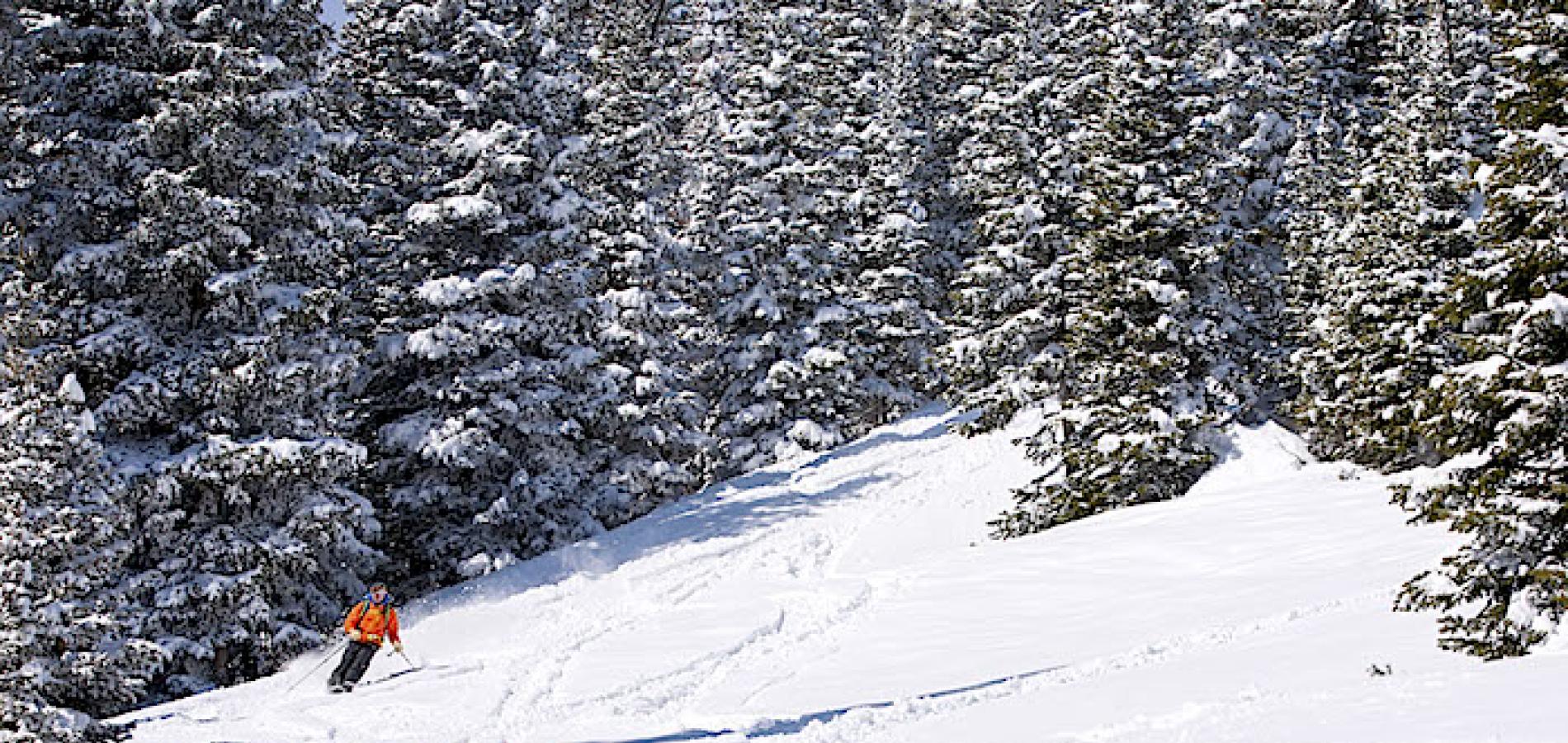Editor's note: The following sponsor-supported article appeared in the Essential Park Guide, Winter 2015-16.
It was just a dusting, but when the first snow of the season fell in the high country of Rocky Mountain National Park in August, it was an alert to begin the transition to a new season.
Snowfall in August sounds crazy for most, and that August 19th storm certainly didn’t pile fluff up deep enough for winter frolicking. But it sent the message that fall was fading, winter wasn’t too far away, and a heavy dump of the white stuff wasn’t out of the realm of possibility for the near future.
Not only is it time to frequently check the forecast, but you have to remember where you stored last winter’s clothing, dig out the cross-country skis and snowshoes for binding checks and waxing, and sit down with the calendar to align your schedule with the full moon for those invigorating after-dark snowshoe wanderings.
In other words, winter is not the season to stay indoors, and right now is not too early to get focused on snow and cold-weather adventures.
Rocky Mountain National Park is 415 square miles of wonderful winter wilderness. You can backcountry ski steep slopes, kick-and-glide Nordic trails, snowshoe into the high country, and on occasion even find dry ground for hiking if you don’t have the gear for snowy pursuits.
Wildlife still call the park home in winter—elk and bighorn can be found, and birding for colorful Pine Grosbeaks, raucous Gray Jays, and the hard-to-spot White-tailed ptarmagins can consume all the daylight hours.

Opportunities abound for family fun in Rocky Mountain National Park/Estes Park CVB
For family fun, the Bear Lake area is very popular for an easy, tyke-friendly trek around the frozen lake and incredible mountain views. From novice to experienced, snowshoers with more time and ambition can head higher into the mountains via a web of trails that lead out from Bear Lake. Be sure to prepare properly and select routes that match your skill level to help ensure fun, and safe, winter exploration.
Another winter destination in the park is the old Hidden Valley ski area found below Many Parks Curve on Trail Ridge Road. The ski lifts are gone, but the hillsides remain and are great for backcountry alpine turns on the 1,200 acres of skiable terrain. The lower slopes are designated for sledding and offer great fun—especially during lower-altitude snow dumps in the spring!
Hankering for some serious backcountry runs? Skin yourself up Flattop Mountain and make some turns on the Couloir or The Drift, or check with the local shops and guides for current conditions. Remember, this is real wilderness, so be prepared with both proper training and equipment.
Got more adrenalin to burn? Hidden Falls, Jewel Lake, All Mixed Up, Petite Grepon and Grace Falls are all popular ice-climbing destinations. If you’re not sure of your moves on ice, check with the Colorado Mountain School or Estes Park Mountaineers for a guided trip.

Gorgeous views extend in all directions at Rocky Mountain National Park/EPCVB
For a more mild ski excursion, cross-country skiers can venture to the Sprague Lake area or head to upper Trail Ridge Road, which is closed to cars during the winter months. The epic views and incredible solitude—especially on weekdays—make for snowy perfection.
Regardless of your choice of sport and destination, go prepared. Sign up for survival skills or avalanche classes, read up on backcountry safety and consult the rangers for updated conditions. You can also hire a guide or join in a guided group venture to take away some of the mystery.
Come sundown, kick back at one of Estes Park’s new brewpubs—Lumpy Ridge and Rock Cut Brewing—or head to the Stanley Hotel to sample Colorado’s largest collection of whiskies. Either way, you’ll find the perfect warm-up spot to regale the day’s adventures.
For lodging and dining options during your stay, be sure to visit www.visitestespark.com.











Add comment